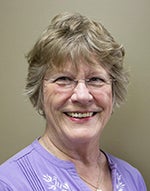Barns really can be noble, as show displays
Published 10:00 am Sunday, July 17, 2016
Art is Bev Jackson Cotter
Bev Jackson Cotter is a member of the Albert Lea Art Center, 226 W. Clark St. in Albert Lea.
“It is possible that millions now living in North America have never seen a barn.” This quote was taken from the book “The Barn, A Vanishing Landmark in North America” by Eric Arthur and Dudley Witney.
Growing up in southern Minnesota, I took barns for granted. They were part of the life of our rural relatives, just like the chicken houses and granaries and windmills. Every farm had a barn, some large and hip roofed, others smaller with adjoining sheds. Some had stone or brick walls, but most were built of wood. They were the buildings where my uncles milked cows and us kids played in the hay piled in the haymow. You couldn’t farm without a barn.
I didn’t really look at them or consider the time and labor that went into the construction, beam by beam, board by board. What were the sources of wood? How long did it take to build a barn when the beams were hand hewn? How did a farmer decide the size of that important building? How did he fund the construction? Did his wife want a house first, or was she content to live in the granary with their small children until after the barn and animals and farmland were providing a better income?
Now I look at an old barn with amazement, knowing that there is a story behind that huge edifice, and each time I hear of another barn that has gone down, I feel sad.
There was a time, when the barn was the most significant building on the farm site. Yes, the house provided warmth, nourishment, love and stability for the family, but the barn was home for the dairy herd (income), the horses (labor), the hay (nourishment), equipment (storage), all of the necessities that provided a living for the family.
When the announcement was made that the upcoming Art Center exhibition was to be called “Barns are Noble,” I smiled at the play on words, and wondered just what would be included in the display. As the opening day approached, I couldn’t help but ponder the reasoning behind the various items offered for exhibit. Would the pictures include new barns, old barns, collapsed barns, barn boards? Where would this idea go?
I cannot speak for others, but I can tell you where my thoughts have gone. And, I must say that I realize the huge old barn built to house dairy cows, horses, beef cattle, sometimes pigs or sheep and chickens too, and a haymow strong enough to hold tons of hay is no longer a viable part of most farming operations, and my sentimentality is based on what was, not what is.
After years of visiting farms, of researching historical area farm life, of writing about our county and the importance of farming to our past and future, my understanding has grown from “It’s fun to visit the farm, to play in the barn, and to eat fried chicken at suppertime,” to “I so admire the dedication, hard work, interest, education and concern our farm families have for the quality, healthy produce that comes from their labors, and farm buildings today must change to meet current production needs.”
In his book “The Death of A Dream,” William Gabler has photographed farm houses in various states of decay. The pictures are so sad that I have a hard time looking at them. The peeling paint, the broken windows, doors hanging on their rusted hinges, wall paper falling from the walls, trees growing through the porch flooring, crops planted on the original lawn where children played, these all remind me that most small family farms are no longer a part of our lives. For each of the photos in this book there would have been an accompanying barn, a part of the dream that now shares the same decay and brokenness and rust.
I hope that the new exhibition “Barns are Noble” will remind our viewers of the value that these beautiful buildings have played in our lives and our history. And, that these historic barns will not be forgotten.



